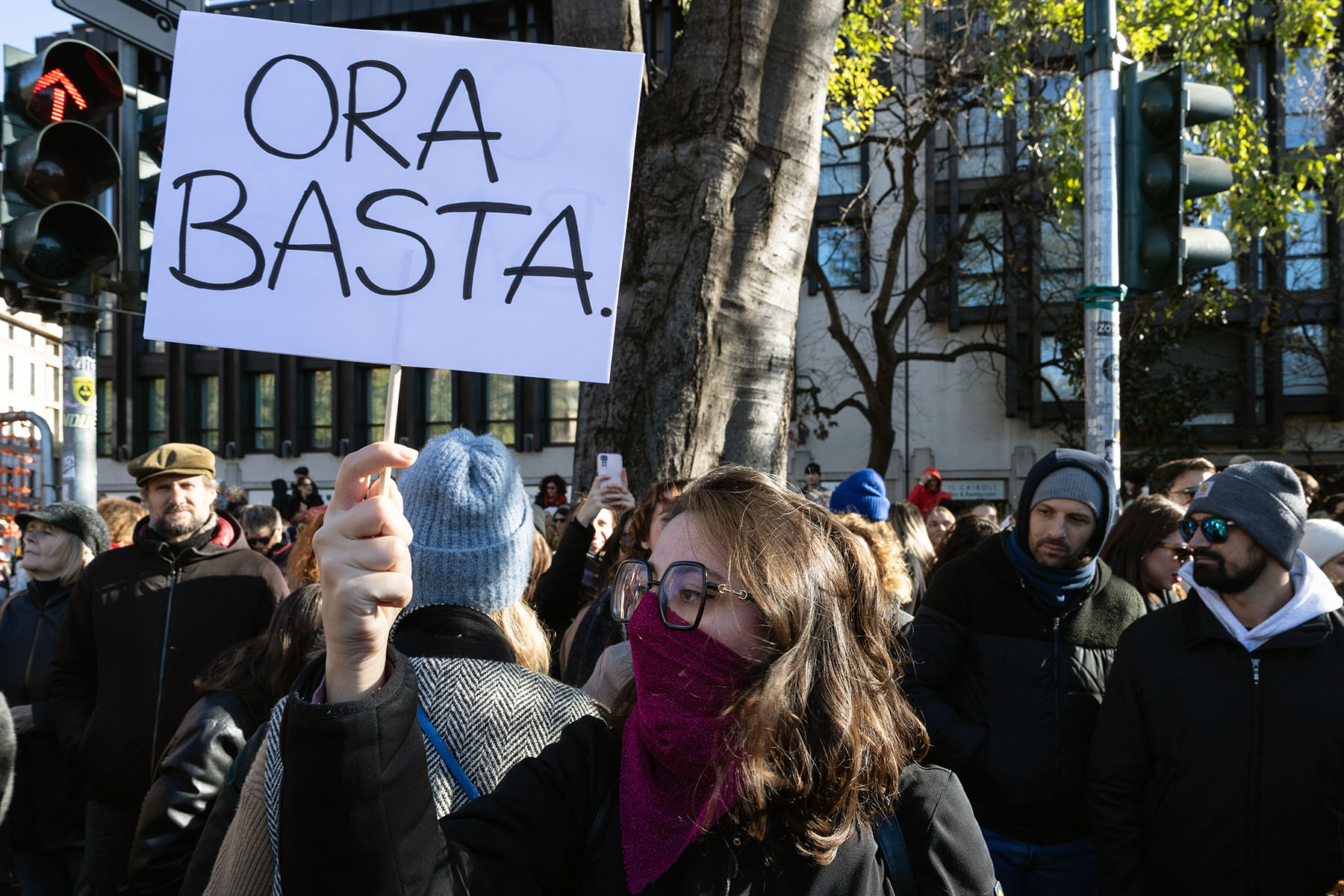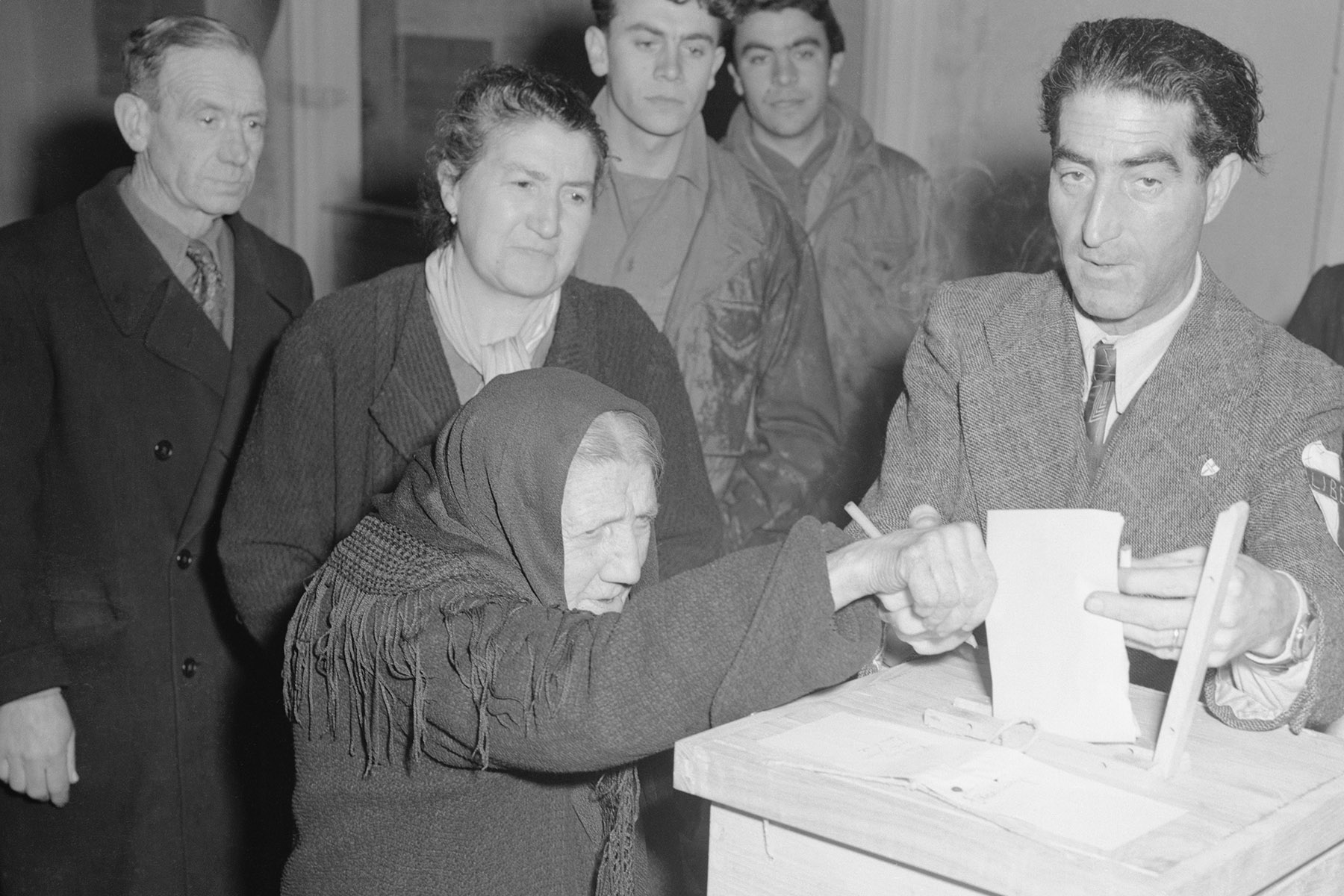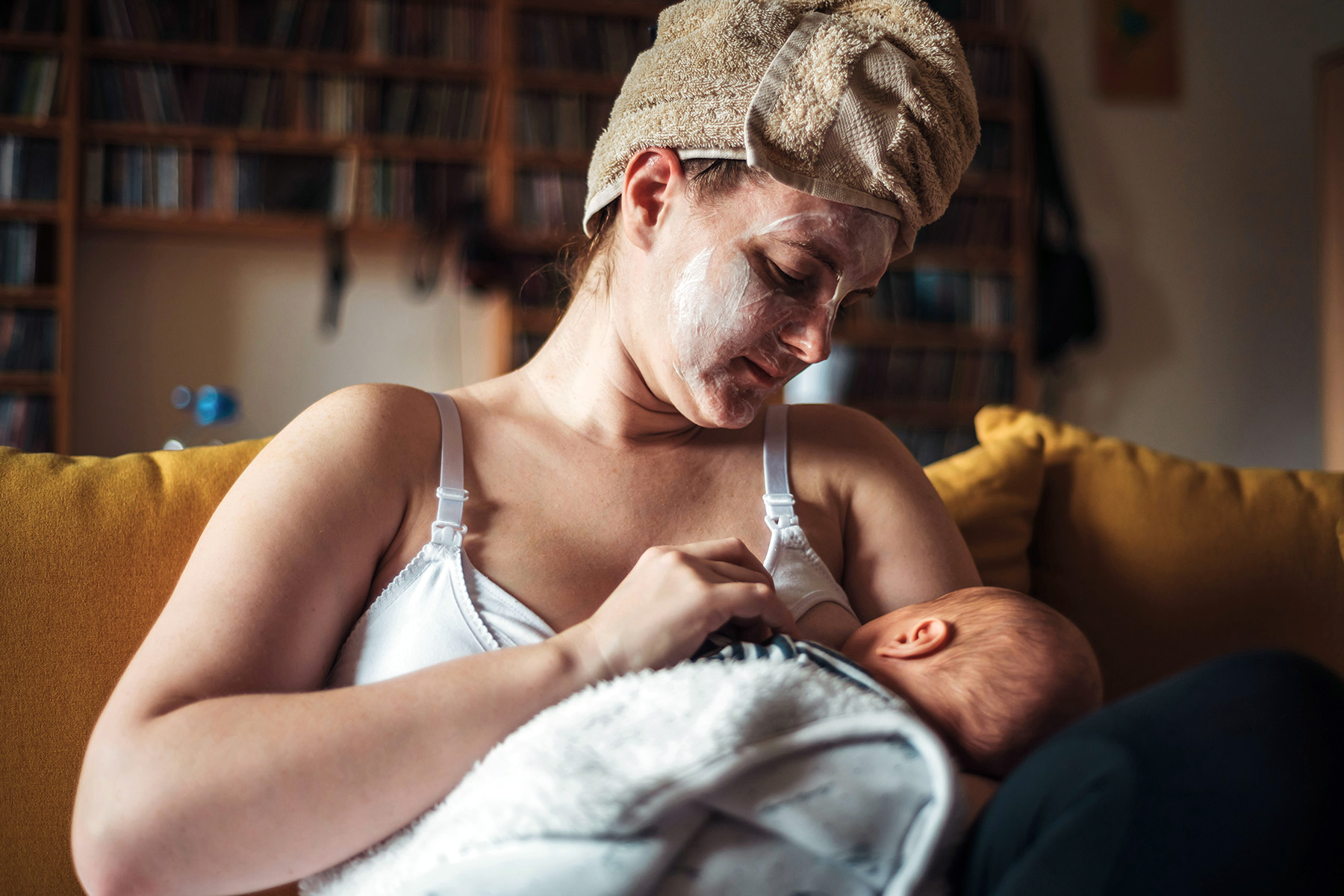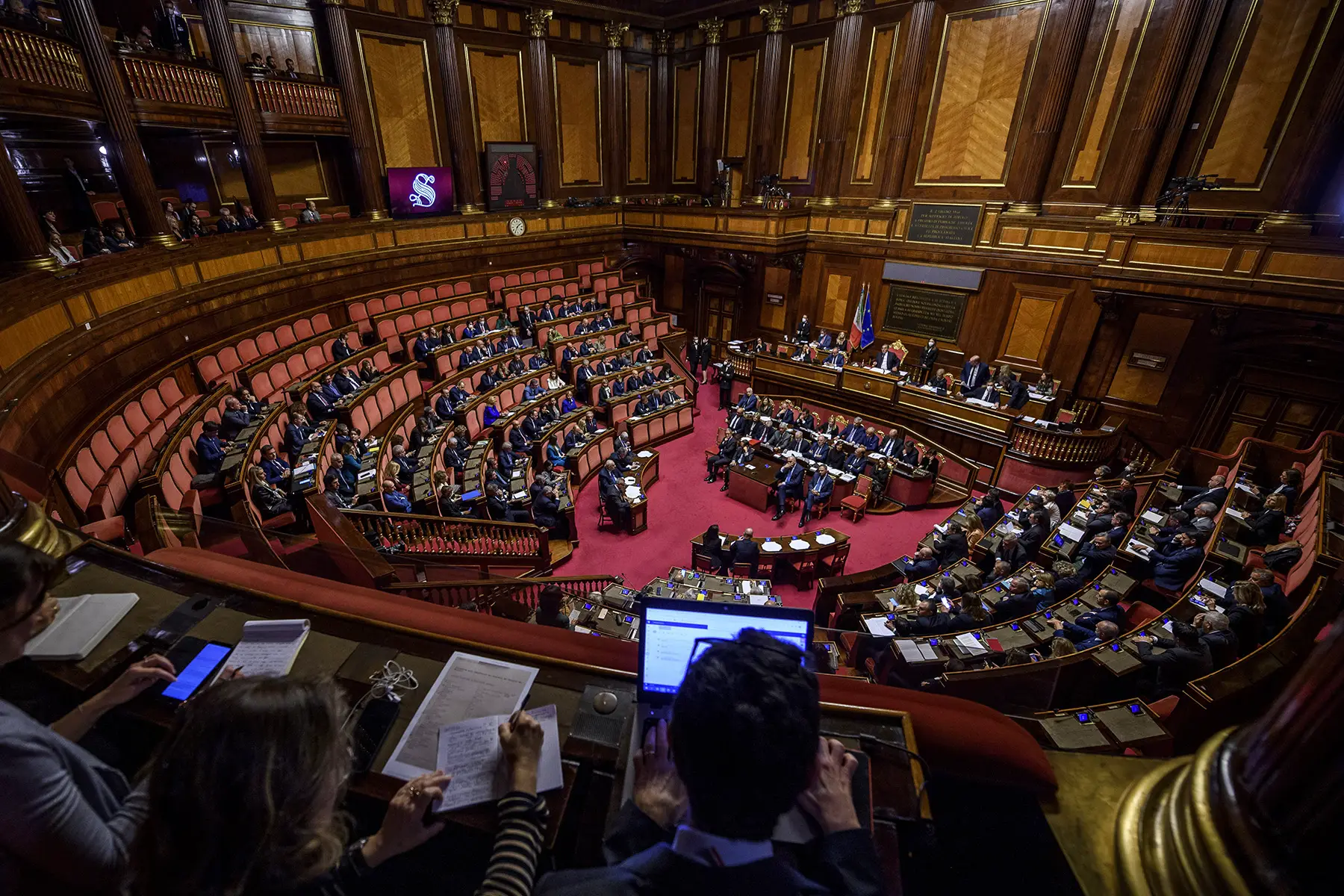Women in Italy have similar rights and freedom as those in the Global North. Gender-based rights in the country are protected by national laws, as well as legislation from the European Union (EU) and the United Nations (UN).
However, Italian society still struggles with stereotypical gender roles and ingrained sexism. As such, the country still has some way to go before achieving gender equality.
Learn more about women’s rights in Italy, the progress that has been made, and what still needs to be done by reading the following sections:
- Italy on women’s rights and gender equality
- What are the Italian attitudes towards women?
- Italy’s laws on harmful practices against women
- Women’s freedom from violence in Italy
- What are women’s political rights in Italy?
- What are women’s rights to education in Italy?
- Do women have economic rights in Italy?
- Women’s health and reproductive rights
- What are the family and divorce laws in Italy?
- Women’s representation in media, arts, and sports
- Where to find women’s rights organizations in Italy
- Useful resources
Ground News
Get every side of the story with Ground News, the biggest source for breaking news around the world. This news aggregator lets you compare reporting on the same stories. Use data-driven media bias ratings to uncover political leanings and get the full picture. Stay informed on stories that matter with Ground News.
Italy on women’s rights and gender equality
Under the Italian constitution, all citizens (regardless of their gender) are equal before the law. Italy also abides by numerous international and EU gender-based legislations.
Women’s equality doesn’t always translate into reality, however. Italy’s gender equality lags behind several other countries in the region. For example, the 2023 EIGE Gender Equality Index ranks it 14th out of 27 EU member states, with a score of 68.2/100. Similarly, Italy is placed 30th out of 36 in the EU region on the 2023 Global Gender Gap Report by the World Economic Forum (WEF).

Since the Second World War, the Italian government has passed several key pieces of legislation to improve women’s position. They include:
- 898/1970 – legalizing divorce in Italy
- 151/1975 – granting women equal economic and property rights in marriage
- 194/1978 – legalizing abortion in Italy
- 198/2006 – promoting equal opportunities and attempting to remove barriers restricting Italian women in the public sphere
- 120/2011 – introducing quotas for female representation on the boards of state-owned bodies and public limited companies
- 168/2023 – strengthening the overall protection against gender-based and domestic violence
The 2021–2026 National Gender Equality Strategy (Strategia Nazionale per la Parità di Genere) outlines the government’s current gender equality strategy and focuses on equal pay and power.
Despite this, Italy continues to struggle with persisting problems, such as low employment rates and public attitudes toward women’s role in society. Recent reports by both Amnesty International (2022) and Human Rights Watch (2024) flagged especially gender-based violence, LGBT+ discrimination, and restrictions on women’s sexual and reproductive rights.
What are the Italian attitudes towards women?
Although women’s role in society has improved compared to a century ago, several areas in Italy remain male-dominated. Many in the country – both men and women – still have to cope with traditional and stereotypical gender roles.
A 2018 study by the Italian National Institute of Statistics (Istituto nazionale di Statistica – Istat) found that 32.5% of the population believes success is more important for men than for women. Around 27.5% responded that men should be the primary breadwinners. These views were more common in southern Italy, with over two-thirds (67.8%) holding at least one stereotypical opinion about gender roles, compared with 58.8% nationwide.

According to the WEF, Italian women remain burdened with unpaid domestic and care work. The average woman in Italy spends 20.4% of their time on housework, compared to 8.4% for men.
Similarly, mothers are often expected to stay home to look after young children under the age of 3, as public childcare and nurseries are uncommon. Most primary schools in Italy operate on half days. It’s been reported that roughly 20% of women quit their jobs within a year of having their first child.
At the same time, mainstream media often represents women in a negative light. In 2017, state-owned broadcaster RAI had to cancel one show for using sexist and racist stereotypes.
According to the Network for Empowerment and Self-Mutual Aid (Rete per l’Empowerment e l’Auto Mutuo Aiuto – REAMA), minority women experience the worst of negative attitudes and are often the target of violence and hate speech.
Italy’s laws on harmful practices against women
Italy has several national laws and international conventions to protect women from harmful practices. For example, gender-based discrimination and violence, female genital mutilation (FGM), human and sex trafficking, and stalking are all prohibited by law.
Despite the legal framework, female genital mutilation remains an issue. In 2018, the European Institute for Gender Equality (EIGE) estimated that Italy’s population included around 35,000 victims of FGM. Moreover, 15–24% of girls aged 0–18 were still at risk. Most of these had a non-Italian family background.
Likewise, EU statistics show that 12 people per million Italians fell victim to human trafficking in 2020–21. This works out to just over 700 people, with nearly half of them Italian citizens. Over three-quarters (75.6%) of trafficked people are victims of female sex exploitation.

While these numbers show that Italy has not completely eradicated harmful practices against women, the country remains committed to combatting the issue. For example, the 2020–2024 National Action Plan on Women, Peace, and Security (Piano d’Azione Nazionale su Donne, Pace e Sicurezza) outlines a proactive approach to protect and promote the rights of women and girls in Italy.
Women’s freedom from violence in Italy
In late 2023, Dunja Mijatovic, the commissioner for human rights at the Council of Europe, voiced her concern about gender-based violence in Italy, calling it a “prevailing and urgent” issue. The statement came amid a national outcry over the 2023 murder of Giulia Cecchetin by her ex-boyfriend.
Indeed, femicide is worryingly common in Italy. At least 109 women were killed in 2023; more than half were murdered by a (ex)partner.
International comparisons of femicide rates prove to be difficult, as there is a lack of EU-wide data. However, numbers suggest that it’s a persistent problem in Italy. While homicide rates have fallen sharply over the years, femicide rates have remained stable.
Likewise, rates of sexual harassment and sexual violence continue to be high. Just over half of Italian women experience some form of sexual harassment in their lifetime (2018). Roughly 3.5% of women aged 15-49 suffer from violence by a partner or ex-partner each year (UN, 2018).
Since the 1970s, the Italian authorities have greatly strengthened laws concerning violence and sexual assault. Key legislation includes:
- 57/1976 – criminalizing marital rape
- 66/1996 – making sexual violence a crime against the person rather than only against public morality
- 38/2009 – classifying stalking as a sexual crime
- 69/2019 – tightening domestic violence laws and making non-consensual distribution of sexually explicit images an offense
- 168/2023 – broadening the definition of unlawful conduct related to domestic violence and increasing the penalties for offenders
However, laws are still not consent-based. Sexual crimes are only recognized if done “by force, threat, or abuse of authority, forcing another person to commit or suffer sexual acts.”
This has led to many appalling court rulings; for example, in 2022, a court cleared a man of rape charges after his victim “gave him hope” by leaving the public toilet door open.
Is Italy an inherently patriarchal society?
Women’s rights activists have long criticized Italy for its culture of ingrained sexism. For example, violent jealousy is seen as normal, and until 1981, the country’s penal code mandated extreme leniency in murder cases of “spouses, daughters, and sisters caught in illicit sex.”

In 2019, a court of appeals overturned a rape conviction after three female judges deemed the victim “too ugly” to be a credible rape victim. Similarly, a judge acquitted a school janitor of improperly touching a minor student in July 2023 after they found the assault lasted only “a handful of seconds.” The ruling said it didn’t consider the groping as a crime because it lasted less than 10 seconds.
Both cases sparked national and international outrage. The Italian Justice Ministry ordered a preliminary inquiry into the first case but has not published its conclusions.
Punishment for crimes against women in Italy
Italian criminal law is listed in the Penal Code (Codice Penale) and the Code of Criminal Procedure (Codice di Procedura Civile). Depending on the crime, the authorities can impose a fine, incarceration, or alternative sentence:
- Harassment can result in a fine of up to €516 plus a sentence of up to six months
- Threats are fined up to €1,032. If serious, perpetrators can be sentenced to up to one year in prison.
- Stalking is considered serious harassment or a serious threat and can lead to a prison sentence of one to six and a half years
- Violent crimes such as (intentional) manslaughter, rape, aggravated assault, and murder can be sentenced between five years to life
Italy has a red code (codice rosso) for sexual assault, rape, and domestic violence, meaning that the courts should deal with the case quickly. It’s worth noting, however, that stalking must be reported within six months for it to be prosecuted.
If you or someone you know is in immediate danger of gender-based violence or a crime, you can call 112 for the police and emergency services. You can also reach out to the free anti-violence helpline at 1522. This service is available 24/7 in Italian, English, French, Spanish, and Arabic.
Italy also has many women’s support centers and shelters that can offer help. You can find a center in your area by visiting the website of the National Anti-Violence Network (Donne in Rete contro la violenza – D.i.Re).
What are women’s political rights in Italy?
Do Italian women have voting rights?
Women in Italy won partial voting rights for local elections in 1925. Full suffrage was achieved on 1 February 1945, toward the end of the Second World War.

The first national election that women participated in was the 1946 referendum on whether to replace the monarchy with a Republic. Nearly 13 million women cast their vote, compared to around 12 million men.
The current voting age in Italy is 18. According to – slightly outdated – statistics, 72.8% of women and 77.8% of men voted in the 2013 national election.
Does Italy have women in power?
Women in Italy can run for office and take up public roles, similar to men. While the country has never had a female President, the Italian government is currently headed by Prime Minister Giorgia Meloni, Italy’s first female leader.
As of January 2024, Italy ranks 57th out of 185 countries in the percentage of female Members of Parliament (MP). Women represent 32.3% of the Italian parliament (129 out of 400 seats) and 36.1% of the upper chamber (74 out of 205 seats). Additionally, 31% of cabinet ministers and 24% of regional assembly members are female (EIGE, 2023).
The government has implemented quotas to try and improve the gender balance of its political representatives. Political parties cannot put forward more than 60% of either men or women in their total candidates contesting first-past-the-post seats. For proportional representation seats, there is an alternating system. In other words, a female nominee must follow a male nominee, and so on.
Historically, Tina Anselmi (Christian Democracy Party) became the first female cabinet minister in 1976. In 1979, Nilde Iotti (Italian Communist Party) was appointed the first female President of the Chamber of Deputies.
Brief overview of feminism in Italy
The feminist movement in Italy started as early as the late 13th-century Renaissance period, with writers such as Christina de Pizan and Lucrezia Marinella advocating for better social conditions and the right to education.
During the fascist era under Benito Mussolini (1922–1945), Italian feminism suffered a setback. However, post-war feminists were instrumental in changing a range of laws in Italy and won women the right to vote, divorce, and obtain an abortion.

The movement continues to play an active role in Italian society through discussion, advocacy, and protest (e.g., against current abortion restrictions in Italy).
If you want to join a women’s rights organization in Italy, the National Council of Italian Women (Consiglio Nazionale delle Donne Italiane – CNDI) is a great place to start. This is an Italian federation of associations that seeks to improve women’s social conditions.
Another notable organization is the feminist fund Semia, which supports women’s and LGBTQI+ rights movements and promotes gender equality in Italy.
What are women’s rights to education in Italy?
All women in Italy have the right to education. This is reflected in literacy rates (99.7%) and the fact that almost all Italian girls receive primary and secondary school education.
In terms of a gender gap, Italy scores exceptionally well. The 2023 WEF report ranks it 1st in tertiary education enrolment (i.e., colleges, trade schools, and universities). In fact, women outperform men in terms of higher education achievements, with 17% of the female population graduating at the tertiary level, compared to 14% of men.
The EIGE Equality Index scores Italy 60.8/100 on education. While the country gets top grades for almost everything, its overall score is lowered by the gender segregation in the subjects studied. For example, women are much more likely to study subjects like education, health and welfare, arts and humanities, and social sciences than men (W: 47%, M: 25%). Similarly, men are more likely to study sciences, technology, and business.
The Italian academic sector is also more male-dominated than in many other countries. According to the UNESCO Institute for Statistics (2021), 38% of higher education staff in Italy are women, compared to an average of 43% for both the EU and the OECD.
Do women have economic rights in Italy?
Women’s employment rights
Under the Italian constitution, all genders have equal employment rights. Employees must receive equal treatment with regard to recruitment, pay, promotion, and contract termination. Despite this, women’s employment rates, top-level positions, and payment still lag behind that of men.

Women make up 42.8% of the Italian workforce (2023), slightly below the average in the EU (46.4%) and the OECD (44.8%). Around 52.4% of working-age women have a job (OECD: 63.2%), compared to 70.3% of men (OECD: 77%). This is the lowest percentage and largest gender imbalance in the EU.
As such, Italy ranks as low as 104th out of 146 countries on the 2023 WEF Global Gender Gap Report in terms of women’s economic participation and opportunity.
The country is particularly lacking in female representation in senior, managerial, and decision-making roles. Apparently, only 15.3% of companies have a female top manager, and just 28.6% of management staff are female.
While Italian women should receive equal pay for equal work, the reality hits a little different. According to the WEF, Italy’s gender pay gap is 7.6% (2023). However, Eurostat sets it at 4.1% (2022), well below the EU average of 12.7%. In 2022, the government adopted an equal pay law to tackle this and other issues (e.g., gender balance on company boards).
Unpaid domestic work and maternity rights
Although women face few legal barriers to employment in Italy, other less visible obstructions still exist. For example, unpaid domestic and care work often falls to women, making the female work-life balance more difficult.
The 2023 EIGE Gender Equality Index reports that 67% of women and 22% of men do household chores completely or mostly by themselves. Incredibly, 24% of women and 10% of men spend more than four hours a day on household tasks.
When it comes to maternity rights, Italy has a comparatively generous policy. New mothers must take five months (20 weeks) of mandatory leave (congedo di maternità) at 80% of their wage. In addition, both parents can take up to nine months of additional parental leave (congedo parentale facoltativo).

Italian labor law prohibits employers from firing female employees from the start of their pregnancy until one year after the birth. During this time, new mothers are also entitled to two hours of rest per working day and can resign without notice.
Women in business
As with paid employment, women in Italy face no legal restrictions when it comes to setting up their own businesses or working as freelancers. However, the same barriers apply. These can have more severe effects, considering that self-employed business owners typically operate on longer working hours.
Data from the Italian Chamber of Commerce (Unioncamere) shows that around 22.2% of business owners are women (2022). For start-ups, that number is even lower (just 12.3%).
If you are or know a female entrepreneur, there are a number of support organizations and networks in Italy that offer help. These include:
- The Ministry of Enterprises and Made in Italy (Ministero delle imprese e del made in Italy – MIMIT) offers funding and support for female entrepreneurs looking to set up a small business or micro-enterprise through the initiatives Smart & Start Italia and On-New businesses at zero-interest (Nuove imprese a tasso zero), and the Female Entrepreneurship (Imprenditoria Femminile) program
- Italia Domani is a government platform with information about gender equality and female entrepreneurship
- The WEgate network provides women entrepreneurs with growth and networking opportunities
- The global Professional Women’s Network offers professional development and international networking opportunities for women
Financial and property rights
Italian women have near-equal access to property and financial services. That means all genders have the same right to open a bank account, take out a mortgage, and buy property. Likewise, widows and daughters have the same inheritance rights as widowers and sons.
However, despite their equal rights, some women still experience discrimination due to cultural stereotyping. Although this is not legal, occurrences do persist.

There are also inequalities in terms of women’s overall financial position. The WEF report places Italy 107th for women’s total earned income and 104th for economic participation and opportunities, both below its overall ranking (79th).
Women’s health and reproductive rights
Italy’s tax-funded healthcare system provides free and low-cost medical help to all citizens and legal residents, regardless of their gender. Women also have access to specialized healthcare providers, such as maternity services, sexual health centers, and psychological support services for survivors of domestic violence.
Italy has legalized the right to abortion and a range of contraceptive methods. That said, medical professionals can refuse to terminate a pregnancy on the grounds of moral objections. According to Health Ministry data from 2021, about 63% of gynecologists refuse to perform the procedure.
In April 2024, the Italian Parliament also approved measures that allow anti-abortion activists to enter abortion clinics. The senate must still vote on the law, however, it’s expected to pass when it does. Both Amnesty International and Human Rights Watch have flagged this as an attack on women’s rights.
You can find an updated map of abortion providers in Italy on the website of the non-profit organization Laiga.
Other than that, Italy performs well in terms of women’s healthcare. The 2023 EIGE Gender Equality Index gives it a score of 89.2/100, slightly above the EU average of 88.5. Women in Italy have a higher life expectancy (85 years) than men (81), and the country’s maternal mortality rate and teenage pregnancy rate are both below EU and OECD averages.
Similarly, 80% of women don’t smoke and are not involved in harmful drinking, compared to 69% of men.
Laws on breastfeeding in Italy
Italian mothers are encouraged to breastfeed their newborns, following World Health Organization (WHO) recommendations and UN guidelines.

There are no laws against breastfeeding in public, but perceptions and attitudes can vary across the country. Research shows that Italy has one of the lowest breastfeeding rates in Europe, and saw an even sharper decline during and since the COVID-19 pandemic.
Under Italian labor law, new mothers who return to work are entitled to two hours of rest each working day. They can use that time for breastfeeding if they choose.
If you would like breastfeeding advice in Italy, you can contact your local public healthcare provider. There are also numerous private lactation consultants and breastfeeding support groups located across the country.
What are the family and divorce laws in Italy?
The legal marriage age in Italy is 18, which can be lowered to 16 with parental consent.
Either spouse can file for a divorce in Italy. However, the Italian courts require you to meet specific legal criteria. For example, most couples must be legally separated for at least 12 months before they can officially dissolve their union.
If the divorce is mutual and uncontested (divorzio in comune), without dependent children, it can be done relatively quickly at a local family court.
Soon-to-be ex-spouses who are ineligible for divorzio in comune can seek an assisted negotiation (negoziazione assistita) or a joint divorce (divorzio congiunto) in court. Both options require the two parties to reach a settlement regarding alimony, child custody, and property division.
If you and your ex cannot reach an agreement, it’s considered a contested divorce (divorzio contenzioso). One of you can then approach the family court to initiate the divorce proceedings.
In Italy, child custody is determined during the negotiations or court proceedings. Both parents have the same eligibility rights, and the primary consideration is the best interests of the child. Generally, judges prefer to grant shared custody. However, the court may award sole custody to one parent if the other is deemed unfit or the child’s welfare is at risk.

Spousal maintenance (assegno di mantenimento) is an absolute right in Italy. Any spouse who cannot financially support themselves means must receive alimony from the other. The payments will continue until the recipient remarries.
Under Italian family law, women must wait 300 days before they can remarry (with a few exceptions). This law is to prevent doubts about the paternity of any child born in the interim period. The regulation does not apply to men.
Women’s representation in media, arts, and sports
Italian media and arts
The Global Media Monitoring Project (GMMP) produces periodic reports on gender inequalities and biases in news reporting around the world. In 2020, it concluded that Italy still had some ways to improve women’s position in media. For example:
- 43% of Italian news presenters and 49% of news reporters are women (respective global averages: 51% and 40%)
- Women make up just 26% of news subjects and sources
- A mere 2–3% of overall stories address women’s rights, gender inequalities, or gender stereotypes
Italian media also has persisting problems with women’s objectification and sexualization. A 2020 survey among young Italians found that the prevailing image of women in the media and advertising is that of an objectified figure. They’re represented as “successful only when good-looking” and are, ultimately, still in the stereotypical role of mother and housekeeper.
This negative portrayal of womanhood might be explained by the gender imbalance in Italy’s cultural sector. Movies by female directors comprised just 13% of Italian films produced in 2019 and 2020.

Likewise, women are massively under-represented and under-valued in Italy’s music industry. Female artists often don’t receive recognition for their total work; instead, they are evaluated as performers only, even when they are music arrangers, producers, and songwriters.
In 2022, Spotify reported that only 14% of official chart music artists in Italy were female.
Women in Italian sports
Sports in Italy has a similar story. According to the 2019 census, women represented 28% of registered athletes and a measly 2% of professional football (soccer) players.
EU research shows that sports journalism (both national and international) in the print media is still male-dominated. In fact, over 90% of articles are written by male journalists, and more than 85% of the coverage is dedicated to male athletes.
When the media does cover female athletes, they are often sexualized, “emphasizing femininity and sexual attraction instead of strength and skills.”
Where to find women’s rights organizations in Italy
Groups offering services and support to women in Italy include:
- ActionAid – an organization that promotes the rights of women and girls in Italy
- BeFree Cooperative (BeFree Cooperativa) – offering help and support against gender-based violence, trafficking, and discrimination. Anti-violence centers and shelters are situated in the regions of Abruzzo, Lazio, and Molise.
- National Anti-Violence Network – a national network of women’s organizations that manage anti-violence centers and shelters across Italy
- National Council of Italian Women – a federation of women’s associations that seeks to improve the social conditions of women in Italy
- Network for Empowerment and Self-Mutual Aid (Rete per l’Empowerment e l’Auto Mutuo Aiuto – REAMA) – a non-profit organization combating male violence against women
- Semia – the first Italian feminist fund in existence, offering support to the rights movements for women and LGBTQI+, and promotes gender equality in Italy
- Union of Women in Italy (Unione Donne in Italia – UDI) – a non-profit feminist association that promotes women in culture, politics, and society. It also publishes a monthly magazine called Noi Donne.
Useful resources
- The 2023 World Economic Forum (WEF) Global Gender Gap Report – detailed report about gender-based issues and research in Italy and the world
- European Institute for Gender Equality (EIGE) – website with EU-based research and statistics and information on Italy
- Italy’s National Gender Equality Strategy (Strategia Nazionale per la Parità di Genere) – official government website with Italy’s gender equality strategy for 2021–2026
- Ministry of Enterprises and Made in Italy (Ministero delle imprese e del made in Italy – MIMIT) offers funding and support for female entrepreneurs looking to set up a small business or micro-enterprise in Italy
- National Anti-Violence Network (Donne in Rete contro la violenza –D.i.Re) – national network with a list of available anti-violence centers and shelters in your area










